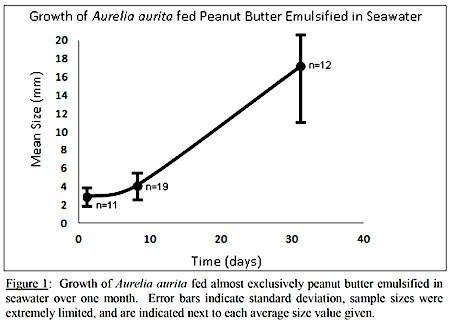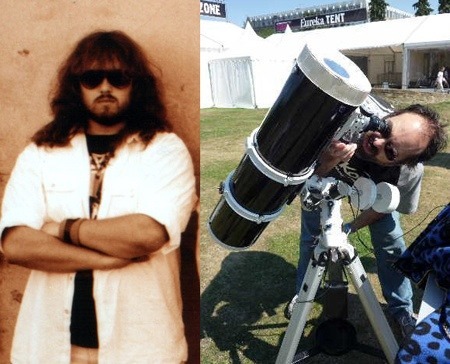Marc Abrahams's Blog, page 428
January 29, 2014
Concoction again loses the race with reality: The centrifugal birthing device
Yes, you can dream up clever twists of science and technology that are funny. But reality generally manages to get there sooner—and even more twistedly—than even the cleverest of comedians. Here’s yet another example:
Here’s the actual patent. Here’s video of the ceremony that included the complete opera about the invention and the inventors. (If you want to know more about both, come to The Science Gallery in Dublin, Ireland, on Thursday night, March 13, 2014, for a special lecture and demonstration.)

When rats meet the legal system: Vermin trials reappraised
“Everyone has heard of a kangaroo court. But how about a court for kangaroos? What about a court for caterpillars? Impossible though it seems, for 250 years French, Italian, and Swiss legal systems had just that. Their ecclesiastic courts tried insects and rodents for property crimes as legal persons under the same laws and according to the same procedures used to try actual persons. These courts summonsed snails to answer charges of trespass, appointed legal counselors to locusts, and considered defenses for grasshoppers on the grounds that they were God’s creatures.”
 So relates professor Peter T. Leeson (George Mason University, Professor of Economics and BB&T Professor for the Study of Capitalism) in a recent paper for the Journal of Law and Economics, Vol. 56, No. 3, (pp. 811-836) entitled simply :’Vermin Trials’
So relates professor Peter T. Leeson (George Mason University, Professor of Economics and BB&T Professor for the Study of Capitalism) in a recent paper for the Journal of Law and Economics, Vol. 56, No. 3, (pp. 811-836) entitled simply :’Vermin Trials’
But how did the ecclesiastic courts’ seemingly ludicrous legal procedures persist for so long, one may ask? Other academicians have studied the question and have drawn a blank. Take, for example professor William Ewald (University of Pennsylvania Law School) who wrote in 1995 : (‘Comparative Jurisprudence: What Was It Like to Try a Rat?’ University of Pennsylvania Law Review, 143:1889–2149)’
“… nobody knows what they were for, and nobody has ever known”
Professor Leeson, however, has formed a(n) hypothesis, involving a complex mathematical analysis of the historical data, and pivoting on what might be called the “Que bono?” paradigm. Rather than trying to determine what the trials were for, asking instead the straightforward question “Who benefited?” In this case, or rather in those cases, the answer is, or rather was, the Ecclesiastics themselves.
“My analysis of vermin trials suggests that one reason why superstitions may persist is that some persons benefit from them.“
The paper can be read in full here:
Note: The image above, provided courtesy The British Library, depicts a Jerboa, which, from a human perspective, is not normally considered vermin. Eats plants and owls.
BONUS (unrelated): Dour President Calvin Coolidge and the sex life of a rat

January 28, 2014
Possibly misleading study title: “Occurrence of Bots in a Wild Ass”
Non-specialists sometimes misconstrue the meaning of a title. Such might occur with this study:
“Occurrence of Bots in a Wild Ass,” P.B. Rao, D. Rao, N Kumar, and D.R. Madhekar, Indian Veterinary Journal, vol. 67 no. 12, 1990, pp. 1171.

Dead people’s respect for the Australian Journal of Parapsychology
Why do dead people who read and enjoy the Australian Journal of Parapsychology look to that journal for insights? This study, by its very existence, perhaps answers that question:
“Psychological phenomena in dead people: Post- traumatic stress disorder in murdered people and its consequences to public health,” Wasney de Almeida Ferreira, Australian Journal of Parapsychology, vol. 13, no. 1, June 2013, pp. 37-56. The author explains:
“Abstract: The aims of this paper are to narrate and analyze some psychological phenomena that I have perceived in dead people, including evidence of post-traumatic stress disorder (PTSD) in murdered people. The methodology adopted was “projection of consciousness” (i.e., a non-ordinary state of consciousness), which allowed me to observe, interact, and interview dead people directly as a social psychologist. This investigation was based on Cartesian skepticism, which allowed me a more critical analysis of my experiences during projection of consciousness. There is strong evidence that a dead person: (i) continues living, thinking, behaving after death as if he/she still has his/her body because consciousness continues in an embodied state as ‘postmortem embodied experiences’; (ii) may not realize for a considerable time that he/she is already dead since consciousness continues to be embodied after death (i.e., ‘postmortem perturbation’ – the duration of this perturbation can vary from person to person, in principle according to the type of death, and the level of conformation), and (iii) does not like to talk, remember, and/or explain things related to his/her own death because there is evidence that many events related to death are repressed in his/her unconscious (‘postmortem cognitive repression’). In addition, there is evidence that dying can be very traumatic to consciousness, especially to the murdered, and PTSD may even develop.”
(Thanks to investigator Kelly Franz for bringing this to our attention.)
BONUS: Further pioneering work by Wasney de Almeida Ferreira appears in the journal Neuroquantology.

A mathematical look at frog choruses
A further attempt to understand croaking:
“Spatio-Temporal Dynamics in Collective Frog Choruses Examined by Mathematical Modeling and Field Observations,” Ikkyu Aihara, Takeshi Mizumoto, Takuma Otsuka, Hiromitsu Awano, Kohei Nagira, Hiroshi G. Okuno and Kazuyuki Aihara, Scientific Reports, vol. 4, Article 3891, January 27, 1014. The authors, at Brain Science Institute, RIKEN and Kyoto University, and the The University of Tokyo, explain:
“This paper reports theoretical and experimental studies on spatio-temporal dynamics in the choruses of male Japanese tree frogs. First, we theoretically model their calling times and positions as a system of coupled mobile oscillators. Numerical simulation of the model as well as calculation of the order parameters show that the spatio-temporal dynamics exhibits bistability between two-cluster antisynchronization and wavy antisynchronization, by assuming that the frogs are attracted to the edge of a simple circular breeding site. Second, we change the shape of the breeding site from the circle to rectangles including a straight line, and evaluate the stability of two-cluster and wavy antisynchronization. Numerical simulation shows that two-cluster antisynchronization is more frequently observed than wavy antisynchronization. Finally, we recorded frog choruses at an actual paddy field using our sound-imaging method.”
Here’s detail from the study:

Figure 6 | Field research on frog choruses, by using our sound-imaging method14. (A) A photograph of a male Japanese tree frog (Hyla japonica). (B)A photograph of our sound-imaging device Firefly. The Firefly unit consists of a microphone and a light emitting diode (LED) that is illuminated when capturing nearby sounds14. (C) A photograph of a paddy field in Japan. Along one edge of this paddy field, we deployed 85 or 86 sound-imaging devices at intervals of 40 cm. As shown here, an index was attached to each device from one end of the edge, which was closer to the camera, to the other end. The spatio-temporal light pattern of these devices was recorded by a video camera. Note that the lights of some devices were not detected, when those devices were deployed far from the camera and were not illuminated by frog calls.We carefully checked all the data, and confirmed that the lights of at least 40 devices close to the camera were stably captured even when those were not strongly illuminated by frog calls. Hence, we used the light patterns of 40 devices close to the camera for data analysis of all the observations. These photographs were taken by I.A. and H.G.O.

January 27, 2014
Extracting a stuck wine cork — or a new child [patent applications]
Extracting a stuck wine cork from a bottle inspired this method for bringing a child into the world.
Jorge Ernesto Odon of Argentina invented a new method for assisting the birth of a child, using an insertable, inflatable bag to grip the child’s head, in the same way one can extract a cork that has gotten stuck inside a bottle.
He presents details in Patent Application CA 2696876, ”Device for extracting elements from a cavity,” published Jan 29, 2009 [with a Filing date Jul 18, 2008 and a Priority date Jul 20, 2007].
There’s more, as you’ll see if you read “Device for extracting elements from cavities, which uses a bag for extraction and an applicator,” application WO 2012164139 A1, [Publication date Dec 6, 2012, Filing date May 31, 2012, Priority date Jun 2, 2011].
In this promotional video, we see Mr. Odon testing his device, at De Moines University:
Mr. Odon gave a TEDx talk about his invention:
This news video report adds color to the story:
BONUS (not entirely unrelated): There’s more than one way to unstick a stuck baby. See the Ig Nobel Prize-winning Blonsky centrifugal force birthing device (and the opera inspired by the Blonsky device). If you are in Dublin, Ireland on Thursday night, March 13, come see my lecture/demo about the Blonsky device, at The Science Gallery.

The Creation of the World’s First Peanut Butter and Jellyfish
An experiment done partly in jest produces intriguing data:
“The Creation of the World’s First Peanut Butter and Jellyfish,” P. Zelda Montoya and Barrett L. Christie, Drum and Croaker, vol. 45, January 2014, pp. 14-18. The authors, at the The Dallas Zoo and Children’s Aquarium at Fair Park, report:
“The use of novel feed items in culturing aquatic or marine animals has always been desirable for a variety of reasons…. That having been said, we would love to claim we conducted this trial with noble purpose, but the truth is that we just wanted to make peanut butter and jellyfish simply to see if it could be done…. We herein report on what we believe to be the first known unholy amalgamation of America’s favorite lunchtime treat and live cnidarians. The success of our trial group of Aurelia on this experimental diet was surprising, and we hope this ridiculous experiment illustrates that unconventional approaches in husbandry are at the very least, worth trying once.”

Deep Sea News discusses the paper. (Thanks to investigator Carin Bondar for bringing this to our attention.)
BONUS: How to make a peanut butter and jelly sandwich (1) with your hands, and (2, below) with your feet:
BONUS (unrelated): The Effects of Peanut Butter on the Rotation of the Earth

Curling brush research (studies of Olympian sports technology)
With the curling competitions at the 2014 Winter Olympics about to get underway, what better time to look at the work of Brett A. Marmo, Mark-Paul Buckingham, and Jane R. Blackford of the School of Engineering & Electronics and the Centre for Materials Science & Engineering, at The University of Edinburgh, UK, who have performed a series of empirical studies into the methodology, physics and game-implications of ‘sweeping’ in front of a moving granite curling stone (a.k.a. rock)?
 In the first instance, see : ‘Design and use of an instrumented curling brush’ (in: Proceedings of the Institution of Mechanical Engineers, Part L: Journal of Materials Design and Applications, 2006, 220). The team designed and implemented a purpose built ‘sweep ergometer’ (prototype pictured right) in order to perform a quantitative measurement of the sweeping technique – believed to be the first time since the game’s invention. The energy-measuring brush was subsequently used in (at least) two further studies : ‘Optimising Sweeping Techniques for Olympic Curlers’ (In: The Engineering of Sport, 6, 2006, pp 249-254). And, (along with colleague I.S. Farrow) ‘Frictional heat generated by sweeping in curling and its effect on ice friction’ (in: Proceedings of the Institution of Mechanical Engineers, Part L: Journal of Materials: Design and Applications, October 1, 2006 vol. 220 no. 4 189-197)
In the first instance, see : ‘Design and use of an instrumented curling brush’ (in: Proceedings of the Institution of Mechanical Engineers, Part L: Journal of Materials Design and Applications, 2006, 220). The team designed and implemented a purpose built ‘sweep ergometer’ (prototype pictured right) in order to perform a quantitative measurement of the sweeping technique – believed to be the first time since the game’s invention. The energy-measuring brush was subsequently used in (at least) two further studies : ‘Optimising Sweeping Techniques for Olympic Curlers’ (In: The Engineering of Sport, 6, 2006, pp 249-254). And, (along with colleague I.S. Farrow) ‘Frictional heat generated by sweeping in curling and its effect on ice friction’ (in: Proceedings of the Institution of Mechanical Engineers, Part L: Journal of Materials: Design and Applications, October 1, 2006 vol. 220 no. 4 189-197)
BONUS (related) A video from the Friends of Canadian Institutes of Health Research, featuring Dr. Jim Till : “The Physics of Curling: Does Sweeping Matter?”

January 26, 2014
Rik McRae joins the Luxuriant Former Hair Club for Scientists (LFHCfS)
Rik McRae has joined the Luxuriant Former Hair Club for Scientists (LFHCfS). He says:
I humbly submit these two photos, the first taken as a grumpy undergraduate marine chemist in the early 1990′s, the second more recent, giving ample evidence of the tide going out up top, is me setting up a telescope for solar observing as an outreach event at the Cheltenham Science Festival. The benefit of being an astronomer is that it gives good justification for covering up the balding pate with a natty knitted bobble hat. When not actively engaged in astronomy/astrophotography, I while away the daytime hours as Research and Development Manager at Sartorius Stedim Lab Ltd, developing laboratory consumables for protein purification by ultrafiltration and membrane chromatography. Among the things I work on are centrifugal concentrators.
Rik McRae, LFHCfS
Research and Development Manager
Sartorius Stedim Lab Ltd.
Gloucester, UK


Lawyers: Drag or Accellerant?
 Two investigators plunged into the depths of a dark suspicion, producing this report:
Two investigators plunged into the depths of a dark suspicion, producing this report:
“Legislating for Economic Sclerosis: Are Lawyers a Baleful Influence on Growth Rates?“, Samuel Cameron [pictured here] and Andy Thorpe, Kyklos, February 2004, vol. 57, no. 1, pp. 67–85. The authors conclude:
“Our investigation has failed to lend much support to the idea that lawyers are detrimental (or beneficial) to the economy.”

Marc Abrahams's Blog
- Marc Abrahams's profile
- 14 followers



